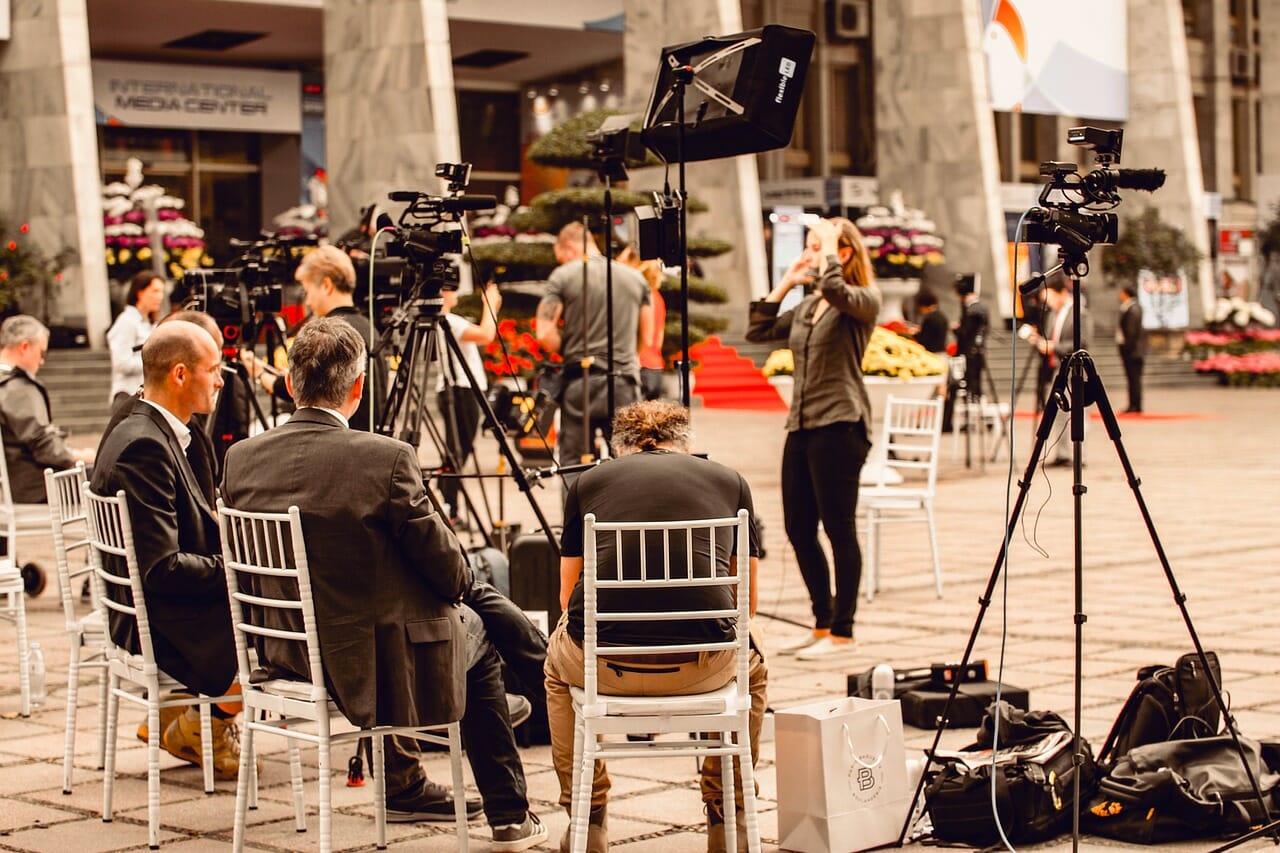The I visa allows foreign media representatives to work as journalists and information or media sector professionals in the United States.
The United States has developed a special visa to assist journalists and news organizations throughout the world. Journalists and others in the information and media sectors can use the visa to complete their work while in the United States. It’s referred to as the I visa.
This article will describe the I visa, as well as its criteria, application process, and other features.
What precisely is the I visa?
The I visa is a temporary US visa for journalists and other media professionals who wish to work in the media sector in the United States. This implies that they are actively obtaining and disseminating information on current events in the US. However, they must work for a media company or organization based outside of the United States. As a result, the company must be based outside of the United States, and media personnel cannot work for a US company on an I visa.
Unlike TN Visa for nonimmigrant NAFTA Professional (TN) visa, permitting nationals of Canada and Mexico to work in the United States as NAFTA professionals in pre-arranged commercial operations with American or international businesses, the I visa is applicable to the majority of media-related jobs; nonetheless, the US has defined who is qualified for this visa, such as:
• A person who works in an independent production business with worldwide journalistic credentials.
• A person who is developing or releasing a video that is instructive or relevant to current news and is filming events related to current news or a documentary. The film must be funded by a company situated outside of the United States.
• Journalists who work for a foreign news organization or media outlet. These journalists must be obtaining information solely for educational purposes, not for profit.
• Journalists go to the United States to acquire information on a current incident. The news should be targeted to a worldwide audience.
• A current accreditation representative from a tourism bureau. The representative’s company must be partially funded by a foreign government, and the trip must be for the purpose of acquiring tourist information about the US.
• A company employee who disseminates technical industrial information. After that, this individual will be able to work at the company’s US offices.
• Journalistic freelancers with a genuine work contract who are hired by a foreign media company. As long as the freelancer is gathering and sharing information, they must be engaged on one of the above-mentioned projects.
Workers who do not fit into one of these categories will need to apply for a visa other than the I visa. Librarians, proofreaders, and set designers in the United States must apply for temporary work visas such as the H visa, O visa, or P visa.
In addition, some occupations, such as those mentioned below, will necessitate the use of a visitor visa (B-1 or B-2 visa) in order to carry out their duties.
• Attending events such as meetings, conferences, seminars, and conventions. At such gatherings, you should not be behaving as a reporter, but rather as a participant.
• At a higher education institution, you will give a lecture, give a presentation, or engage in an academic activity. For a single institution, this activity cannot last more than 9 days, and your funds cannot originate from more than 5 separate sources.
• You’ll be on vacation or on a trip throughout the United States and won’t be able to report on it.
• You will do your own research.
• You will shoot photographs but will not be compensated by a company in the United States.
Furthermore, despite the fact that citizens of a few countries are qualified for the Visa Waiver Program, all media employees visiting the US for informational purposes must get an I visa. This means that if you try to enter the US under the Visa Waiver Program and participate in activities that are related to the I visa, you will be denied entry and deported to your home country.
Holders of an I visa are allowed to participate in instructive activities and acquire news, as well as enroll in some university courses. An I visa holder is not allowed to enroll in a full academic program and is also not allowed to work for a U.S. firm.
Requirements of the I visa
There aren’t many prerequisites for the I visa. The sole requirement that candidates must meet is one that is linked to their profession. This means they must be employed in the above-mentioned position. As a result, you must be a representative of a foreign news organization gathering information. Aside from that, there are no further prerequisites for obtaining an I visa.
What is the procedure for obtaining an I visa?
The I visa application process is comparable to that of all other non-immigrant visas in the United States. You must submit an application to the nearest US Embassy office. The following actions must be taken:
Fill up Form DS-160
Fill in your personal information, the purpose for your visit, and any other fields that are required. You will be sent to a confirmation page with a code that you will need later after submitting the form.
Pay the application fee and upload a photo that complies with the Photo Requirements.
The I visa costs $160 and is non-refundable regardless of the decision of the US Embassy. In addition to the application cost, additional charges such as reciprocity or visa issuance fees may be required. The pricing of these services is decided by your country’s relationship with the United States. Keep your receipts once you’ve paid all of the needed fees since you’ll need them later.
Appointment with your visa interviewer.
All visa applicants between the ages of 14 and 79 must attend a visa interview at the US Embassy. For this interview, you must first schedule an appointment. Because the US Embassy may be overwhelmed, scheduling this appointment as soon as possible is crucial to avoid long wait times. After you’ve scheduled your appointment, you’ll get a visa appointment letter, which you must attach to your documents on the day of your interview.
Make a new document file.
For your I visa, you’ll need a file with all of the needed papers, which will be used to support your application. You’ll bring that file with you to the interview. The following documents are required to be included in the file:
• Valid passport
• Form DS-160 which confirms page
• Receipts which prove you have paid all applicable fees or charges
• Visa appointment document
• A letter from your employer outlining the purpose of your trip to the US, which must be relevant to the I visa. The letter should mention your length of stay, the period of your work contract, and your personal information.
• Qualifications, ensuring you fall under I visa category:
• Past published articles
• Journalistic accreditations
• Work contracts
• Press card
• Documents attesting to your good health
• Documents attesting to the fact that you have no criminal record
Attending visa interview — During the interview, a US Embassy official will question you about your character, health, any prior criminal convictions, previous U.S. visas you’ve had, your trip purpose, and other related questions. You must answer all questions honestly and without making any attempts to conceal anything. At the completion of your interview, the official will have made a choice, but you will have to wait for the processing to receive your response.




